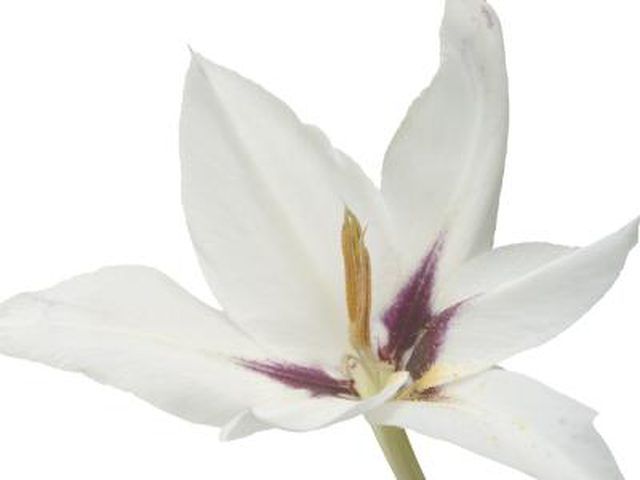Bulbs
Flower Basics
Flower Beds & Specialty Gardens
Flower Garden
Garden Furniture
Garden Gnomes
Garden Seeds
Garden Sheds
Garden Statues
Garden Tools & Supplies
Gardening Basics
Green & Organic
Groundcovers & Vines
Growing Annuals
Growing Basil
Growing Beans
Growing Berries
Growing Blueberries
Growing Cactus
Growing Corn
Growing Cotton
Growing Edibles
Growing Flowers
Growing Garlic
Growing Grapes
Growing Grass
Growing Herbs
Growing Jasmine
Growing Mint
Growing Mushrooms
Orchids
Growing Peanuts
Growing Perennials
Growing Plants
Growing Rosemary
Growing Roses
Growing Strawberries
Growing Sunflowers
Growing Thyme
Growing Tomatoes
Growing Tulips
Growing Vegetables
Herb Basics
Herb Garden
Indoor Growing
Landscaping Basics
Landscaping Patios
Landscaping Plants
Landscaping Shrubs
Landscaping Trees
Landscaping Walks & Pathways
Lawn Basics
Lawn Maintenance
Lawn Mowers
Lawn Ornaments
Lawn Planting
Lawn Tools
Outdoor Growing
Overall Landscape Planning
Pests, Weeds & Problems
Plant Basics
Rock Garden
Rose Garden
Shrubs
Soil
Specialty Gardens
Trees
Vegetable Garden
Yard Maintenance
How to Plant Peacock Orchids
How to Plant Peacock Orchids. The late summer garden gets a visual boost when peacock orchids (Gladiolus murielae) dazzle with delicate white-petaled flowers accented by purple centers. This corm, actually in the Iridaceae family despite its exotic name, grows in U.S. Department of Agriculture plant hardiness zones 7 through 10. The plants grow 2...

The late summer garden gets a visual boost when peacock orchids (Gladiolus murielae) dazzle with delicate white-petaled flowers accented by purple centers. This corm, actually in the Iridaceae family despite its exotic name, grows in U.S. Department of Agriculture plant hardiness zones 7 through 10. The plants grow 2 to 3 feet tall, with flower spikes that support anywhere from two to 10 long-lasting flowers. If you decide to plant peacock orchid corms as a part of your spring gardening tasks, take the time to prepare the soil properly before planting, which paves the way for a strong blooming season.
Things You'll Need
Garden fork
Compost
Trowel
Plant peacock orchids in the spring as soon as the soil temperature reaches 50 F.
Select a site in full sun with loamy, humus-rich soil that drains well. Picking a spot that's shielded from the wind will help to protect the flowers when they bloom in mid to late summer.
Spread 2 to 3 inches of compost on a cleared garden bed. Dig the compost into the bed, mixing it with the soil 12 inches deep. Use a garden fork to thoroughly blend the soil.
Use a small trowel to dig a hole 2 to 6 inches deep for each corm, adjusting the depth to 2 to 3 inches for smaller corms and 5 to 6 inches for larger ones, advises the Missouri Botanical Garden.
Space the planting holes 4 to 6 inches apart. Arrange peacock orchids in natural-looking groups of five to create a graceful, informal look.
Set one corm in each planting hole with the slightly pointed end up. Look for the growing point or shoot emerging from the top of the corm.
Push soil over the corms and smooth it out with the palm of your hand. Avoid compacting the soil over the corms as you work through the garden bed.
Water the entire bed right after planting. Use a sprinkler or soaker hose to moisten the soil 6 to 8 inches down.
Maintain consistently moist soil after planting and through the spring and early-summer growing season. Watering frequency varies, depending on your specific soil conditions and the weather. To determine how often to water, insert your index finger 1 inch into the soil and water if it feels dry.
Tips & Warnings
Encourage early flowering by starting peacock orchids indoors. About one month before the last frost date in your area, plant the corms in pots. Use standard potting soil and set the corms 2 to 6 inches deep, depending on their size. Keep the potting medium moist and set the pots in a sunny indoor spot. When the soil outside warms to 50 F, dig up the corms and transplant them into the garden, keeping as much soil around the roots as possible. When you replant outdoors, set the growing corms at the same depth in the soil as they were in their starter pots.
Look for peacock orchids under the alternate common name of peacock gladiolus. You can occasionally find this plant under its former scientific name, Acidanthera bicolor.
The corms of the peacock orchid are poisonous and can be dangerous to cats, dogs and children, who might try to ingest them.